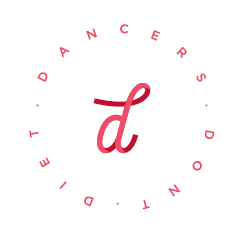Body Image, Dance and Eating
 When you hear "Body Image", what do you think of?
When you hear "Body Image", what do you think of?
Is it... how you see yourself in the mirror?
Is it... what you think of your body?
It is... what you think others may be thinking of your body?
Understanding Body Image is crucial for dancers (and teachers!) because you're expressing your emotions, feelings and thoughts and telling a story through your body and movement. What is Body Image?NEDC describes Body Image as "the perception that a person has of their physical self, but more importantly the thoughts and feelings the person experiences as a result of that perception".It's the way you SEE yourself; the way you FEEL about the way you look; the THOUGHTS and BELIEFS you feel about your body; and the things you DO in relation to the way you look.Those are the things that build your Body Image. Body Image in Ballet and DanceA small head, long neck, long straight limbs, flat chest, short torso, small hips, high arches... these are the typical bodily features portrayed as the "ideal ballerina body".But most of these features are largely genetic. So the vast majority of dancers who don't fit into this stereotypical 'ideal' would resort to this thought: "well, weight is the only thing I CAN control and therefore I SHOULD". Oh and how it's a sin for a young female dancer to develop roundness at puberty!Many of the girls are already feeling out of control with their bodily changes and the last thing they need is a disappointed look from their respected teacher, examiner, choreographer, friends and parents.There'll also be a temporary reduction in flexibility and the coordination skill may seem to go down as well because the body's still finding ways to adjust to the skeletal and muscular changes. But these changes are often (mistakenly) attributed to the roundness.So the young female dancer will feel even more disconnected from her body and her Body Image plummets down.This is a loss for the teacher/choreographer too, because if the dancer's Body Image goes down, their self-esteem, self-efficacy, creativity and confidence can be affected too. How does Body Image relate to Eating?When you have a positive Body Image, you appreciate and value yourself more, ultimately leading to better self care.When you have a negative Body Image, the opposite happens and you're more likely to not eat healthfully or intuitively to satisfy the demands of dance and art.It's known that negative Body Image is a contributor to dangerous dieting and eating disorder development, especially in dancers where the industry has such a big focus on the aesthetics. Remember from this post that such extreme dieting and disorders can increase injury rates, slow down recovery, decrease performance and can ultimately lead to a loss of dance career. Trying to eat healthfully when your Body Image is down is like trying to do a Grand Jete with a torn hamstring.It won't be comfortable, nor will it be long-lasting.It can actually be quite damaging if it's coming from "I will eat healthy so I can lose weight and be accepted!" That's like trying to stretch the already torn hamstring. How to Improve Body Image (baby steps)Improving Body Image is a daily work and that means small baby steps can make a significant improvement.Here's some simple activities you can start doing to improve Body Image.
- Get a piece of paper and a pen. Write down all the positive things you own (skills, knowledge, characteristic) that are not related to your weight, size or looks (e.g. "I'm kind", "I tell funny jokes", "I'm always on time for my lessons", "I do my rehab exercises daily", "I go to bed early"). Keep this in your wallet or notebook or bag and read it to yourself regularly.
- Give yourself a nice, gentle, self-massage. While massaging, say "thanks for your hard work" to the body parts - legs, arms, or anywhere else you're massaging. Because whether you notice or not, your body has been working very hard already to keep you doing what you've been doing today.
- Do a social media clean up. Don't follow accounts or pages that dictate you to be a particular size or shape. Fill your media with what makes you feel good, safe, and comfortable; not anxious, paranoid or inadequate. My (Australian) shoutout goes to Jodie Arnott Counselling, Ashlee Bennett, Untrapped, Haven, Feel Good Eating, This Zesty Life, The Mindful Dietitian and The Embodied Journey. Follow them on Insta.
Remember: You are a dancer, not just a moving body. How you feel about yourself matters.You'll come out as a much stronger, independent, resilient, confident and creative dancer if you can prioritise your worth and work towards improved Body Image that's not swayed by external factors or ideals.  Fumi x
Fumi x
